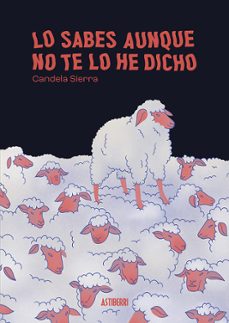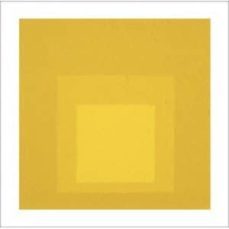Imprescindibles
Más vendidos Libros más leídos eBooks más leídos Todos los libros Todos los libros Autores destacados Series y sagas
Recomendados Libros recomendados Autores destacados Libros que inspiran Vidas con historia LGTBIQ+ English books
Ficción
Literatura Contemporánea Estudios literarios Clásicos Cuentos Poesía Teatro Libros de bolsillo Sagas literarias
Géneros literarios Novela romántica y erótica Novela negra Novela histórica Narrativa fantástica Novela de ciencia ficción Novela de terror Narrativa de humor Narrativa de viajes
No Ficción
Ciencias y tecnología Biología Ciencias Ciencias naturales Divulgación científica Informática Ingeniería Matemáticas Medicina Salud y dietas Formación Idiomas Estilo de vida Libros de Cocina Guías de viaje Narrativa de viajes Deportes Libros de Juegos Manualidades
Humanidades Autoayuda y espiritualidad Ciencias humanas Derecho Economía y Empresa Psicología y Pedagogía Filosofía Sociología Filología Biblioteconomía Estudios filológicos Estudios lingüísticos Estudios literarios Historia y crítica de la Literatura
Infantil
Juvenil
#Jóvenes lectores Narrativa juvenil Clásicos adaptados Libros Wattpad Libros Booktok Libros de influencers Libros de Youtubers Libros Spicy Juveniles Libros LGTBIQ+ Temas sociales Libros ciencia ficción Libros de acción y aventura Cómic y Manga Juvenil Cómic Juvenil Manga Shonen Manga Shojo Autores destacados Jennifer L. Armentrout Eloy Moreno Nerea Llanes Hannah Nicole Maehrer
Libros de fantasía Cozy Fantasy Dark academia Hadas y Fae Romantasy Royal Fantasy Urban Fantasy Vampiros y hombres lobo Otros Misterio y terror Cozy mistery Policiaca Spooky Terror Thriller y suspense Otros
Libros románticos y de amor Dark Romance Clean Romance Cowboy Romance Mafia y amor Romance dramatico Romance dramatico Romcom Sport Romance Otros Clichés Enemies to Lovers Friends to Lovers Hermanastros Slow Burn Fake Dating Triángulo amoroso
Cómic y Manga
Novela gráfica Novela gráfica americana Novela gráfica europea Novela gráfica de otros países Personajes, series y sagas Series y sagas Star Wars Superhéroes Cómics DC Cómics Marvel Cómics otros superhéroes Cómics Valiant
eBooks
Literatura Contemporánea Narrativa fantástica Novela de ciencia ficción Novela de terror Novela histórica Novela negra Novela romántica y erótica Juvenil Más de 13 años Más de 15 años Infantil eBooks infantiles
Humanidades Autoayuda y espiritualidad Ciencias humanas Economía y Empresa Psicología y Pedagogía Filosofía Historia Historia de España Historia Universal Arte Cine Música Historia del arte
Ciencia y tecnología Ciencias naturales Divulgación científica Medicina Salud y dietas Filología Estudios lingüísticos Estudios literarios Historia y crítica de la Literatura Estilo de vida Cocina Guías de viaje Ocio y deportes
BRENDA DANILOWITZ
Recibe novedades de BRENDA DANILOWITZ directamente en tu email
Filtros
Del 1 al 4 de 4
PHAIDON PRESS LIMITED 9780714849652
First book to focus on how the legendary artist/educator Josef Albers (18881976) influenced generations of artists, including Donald Judd, Robert Rauschenberg and Robert Mangold, now available in paperback Incorporates rare archival material, including behind-the-scenes documentary photography of Albers'' life and teaching methods at the Bauhaus, Black Mountain College and Yale Reveals Albers'' formative philosophies on art, life and the nature of perception through first-hand accounts of more than 150 students and colleagues over more than 40 years Features lush colour reproductions of Albers'' classic 1963 Interaction of Color taken from original press proofs
Ver más
Tapa blanda
RM Verlag, S.L 9788492480517
Anni Albers (1899-1994) llegó a entender perfectamente la esencia del arte textil y los fundamentos de su expresividad. Miembro pionero del taller de tejido de la Bauhaus, la escuela de diseño de Alemania en los años veinte, fue una de las artistas textiles mas destacadas del siglo XX.En 1963, en el Taller de Litografia Tamarind de Los Çngeles, se sintio atraida por el proceso de impresion y por el potencial creativo que ofrecia la litografia. A lo largo de las dos decadas siguientes, Anni Albers creo una serie de impresiones que lograban traducir su innovador trabajo textil a este nuevo medio, introdujo los colores mexicanos en sus trabajos y sus textiles se liberaron de las estrictas limitaciones de la trama que habian dominado su trabajo realizado en la Bauhaus. Exploro nuevas tecnicas con la litografia, la impresion en offset, los procesos fotograficos y la serigrafia, creando un cuerpo de obra que ahora se publica aqui en su totalidad por vez primera.
Ver más
Tapa dura
RM VERLAG 9788492480388
Josef Albers fue uno de los más influyentes creadores que la escuela Bauhaus ha dado al mundo del arte. En 1933, cuando la presión nazi obligo a la escuela a cerrar, se mudó a Estados Unidos . Tras una etapa de transicion comienza un proceso de experimentacion con los efectos opticos del color, que culminara en su mas conocida serie de cuadros:; Homenaje al Cuadrado. En ella utiliza el calculo de formas cada vez menores para ilustrar su terio de que los cambios de lugar, la forma y la luz alteran el color. Esta edicion impecable nos permitira descifrar el interes que Albers mostro por la ambiguedad de la percepcion; la discrepancia entre la informacion visual que la retina recibe y lo que la mente percibe, quedando claro que la identidad del color no reside en si mismo, sino que se establece por relacion con su entorno.
Ver más
Tapa dura
PHAIDON PRESS LIMITED 9780714845999
Josef Albers: To Open Eyes A fascinating study of the revolutionary painter and teacher, Josef Albers.Frederick A Horowitz and Brenda Danilowitz First book to focus on how the legendary artist/educator Josef Albers (1888-1976) influenced generations of artists, including Donald Judd, Robert Rauschenberg and Robert Mangold Incorporates rare archival material, including behind-the-scenes documentary photography of Albers' life and teaching methods at the Bauhaus, Black Mountain College and Yale Reveals Albers' formative philosophies on art, life and the nature of perception through first-hand accounts of more than 150 students and colleagues over more than 40 years Features lush colour reproductions of Albers' classic 1963 Interaction of Color taken from original press proofs Josef Albers (1888-1976) has long been admired for his progressive vision as an artist and designer who blurred distinctions between fine and applied art, but rarely has his influence as a teacher been examined with such depth and detail. The German-born artist/educator was a remarkable classroom performer whose colorful language, wit, and dramatic flair held his students spellbound and turned his lessons into high adventure. Whether at the Bauhaus in prewar Germany, Black Mountain College in rural North Carolina during the 1930s and 1940s, or at Yale in the 1950s, Albers-the-teacher was driven by one thing: the desire to open his students' eyes to a different way of perceiving art and, ultimately, life. The son of a house painter and decorator in Germany's northwest Ruhr region, Albers grew up surrounded by artisans and learned at an early age to paint, cut stone, and craft wood. Although his ambition had always been to become an artist, Albers entered teacher's training college at his father's insistence and spent his first professional year teaching six- to fourteen-year-olds in a single-classroom school. Later experience at the Koniglichen Kunstschule in Berlin's rough-and-tumble Alexanderplatz neighborhood and exposure to the city's hothouse cultural atmosphere inspired the young Albers to merge his love for art and education--a decision that would have an impact on generations of artists to come in both Europe and the U
Ver más
Tapa dura
Del 1 al 4 de 4






























